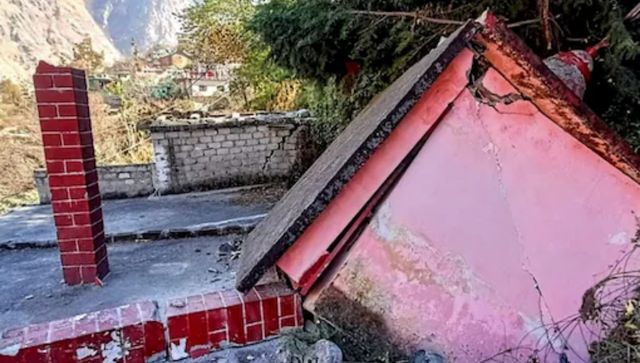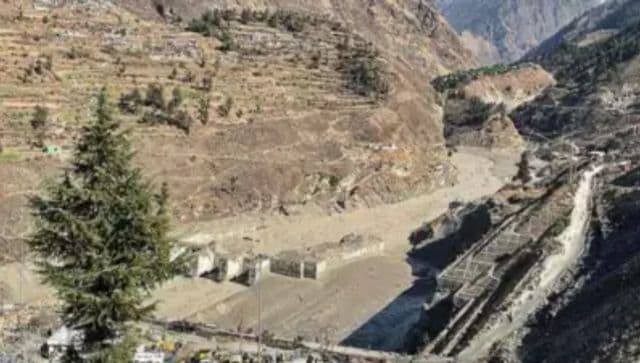Joshimath crisis: How Uttarakhand ignored repeated warnings for over 45 years
Joshimath crisis: How Uttarakhand ignored repeated warnings for over 45 years

The ‘sinking’ town of Joshimath, located in the border district of Chamoli, has been declared a disaster-prone area amid a rise in land subsidence, the Uttarakhand authorities said on Monday (9 January).
Since meters-long and over one-foot-wide cracks started appearing in houses, temples and other buildings in Joshimath last week, as many as 82 families have been shifted to 16 temporary shelters, as per a Times of India (TOI) report.
As many as 678 residences have been affected by subsidence, with an eight-member expert panel recommending demolishing the most damaged homes and relocating people at risk, the report added.
Moreover, all construction work related to NTPC’s Tapovan Vishnugad Hydroelectric Project, Ho Hare Helang bypass by the Border Roads Organisation (BRO) and projects undertaken by the Joshimath Municipality have been banned in the town till further orders.
Experts say warnings about the current situation in Joshimath were issued long ago.
Were early warnings on Joshimath ignored by governments, which has led to the current crisis? Why residents are blaming NTPC’s Tapovan Vishnugad Hydro Power Project for the incident? Let’s take a closer look.
Were early warnings ignored?
Joshimath, the small Himalayan mountain town, was built on the debris of a landslide triggered by a tremor over a century back, as per BBC.
Located on the middle slope of a hill, Joshimath falls in an earthquake-prone zone.
In a significant finding, the Mishra Commission report of 1976 revealed that the town was located in an ancient landslide zone, which means the area does not have a high load-bearing capacity.
The report also cautioned against “unplanned development in this area, and identified the natural vulnerabilities”, adding that the dearth of adequate drainage facilities was causing landslides.
“Joshimath was established by the Katyuri dynasty in the 11th and 12th Centuries. Joshimath is situated in the middle of two drainages – AT Company Nala and Singhdhar Nala,” Dr Manish Mehta, a geologist at Dehradun’s Wadia Institute of Himalayan Geology, told India Today TV.
“Joshimath is built on a loose unconsolidated surface. The material beneath is soil and debris. The presence of clay suggests that there must have been a glacier many many years ago, in Joshimath,” he added.

Earlier, a 2006 report by another scientist of Wadia Institute of Himalayan Geology, Dr Swapnamita Vaideswaran, revealed the soil of Joshimath might have been loosened due to seepage from streams uphill.
Environmentalist Chandi Prasad Bhatt has hit out at successive governments for failing to act on warnings by experts on probable disasters in Joshimath and adjoining areas.
“Failure of successive governments to act on expert warnings seems to be at the root of the Joshimath crisis,” he was quoted as saying by PTI news agency.
Bhatt, who is connected with the Chipko Movement, said “a detailed zonation mapping of the Himalayas in Uttarakhand and Himachal Pradesh, warning of the lurking dangers in Joshimath, had been submitted to the state government more than two decades ago”.
As per Bhatt, a study – using remote sensing and Geographic Information System (GIS) – conducted by 12 leading scientific organisations of the country including the National Remote Sensing Agency (NRSA) had submitted a report to the Uttarakhand government in 2001.
As per the report, over 99 per cent of the mapped area of Joshimath was landslide-prone in varying degrees.
Based on this report, a meeting was held between experts and senior administrative officials where it was decided to adopt safety measures, but no actions were taken, Bhatt told PTI.
ALSO READ: Why Uttarakhand’s Joshimath town is ‘sinking’
NTPC’s project under scanner
The Mishra Commission report had called for a ban on heavy construction around Joshimath.
“Joshimath is not suitable for a township,” the government study had warned.
However, the alert was not heeded as Joshimath has become the gateway for thousands of pilgrims bound for Badrinath and Hemkunt Sahib shrines, as well as attracting tourists heading to Auli.
Experts believe unplanned construction, over-population, hydro-power activities and obstruction of the natural flow of water could have led to the present disaster in Joshimath, as per Indian Express.
Locals in the town blame the 520 MW Tapovan-Vishnugad project on the Dhauliganga river for the land subsidence.

Geologists MPS Bisht and Piyoosh Rautela wrote in a 2010 paper published in Current Science, that the tunnel of the NTPC’s hydropower project traverses “all through the geologically fragile area below Joshimath”, BBC reported.
The residents allege the tunnel had water seepage “from a punctured aquifer, leading to the drying of water sources in Joshimath”, which experts say could be one of the reasons for the sinking of land, reported Indian Express.
Local environmental activist Atul Satti told news agency IANS that they have consistently raised alarm about the “irreparable damage” caused by multiple tunnel and hydropower projects in Joshimath and other regions of Uttarakhand, but their voices were “blatantly ignored”.
“The entire responsibility of Joshimath caving in is on NTPC’s Tapovan Vishnugad Hydro Power Project. “Continuous blasting in the tunnels has shaken the foundation of our town. We demand instant action from the government that must include immediate stalling of the NTPC project, closure of the Chardham all-weather road (Haleng-Marwari Bypass), implementation of NTPC’s pact that ensures houses, setting a committee for rehabilitation of Joshimath within a set timeframe,” Satti was quoted as saying by the news agency.
Meanwhile, NTPC has denied the allegations and said in a statement: “The tunnel built by NTPC does not pass under Joshimath town. This tunnel is dug by a tunnel boring machine (TBM) and no blasting is being carried out presently”, Indian Express reported.
With inputs from agencies
Read all the Latest News, Trending News, Cricket News, Bollywood News,
India News and Entertainment News here. Follow us on Facebook, Twitter and Instagram.
What's Your Reaction?


























































